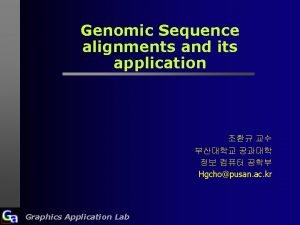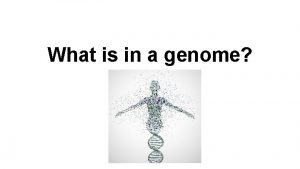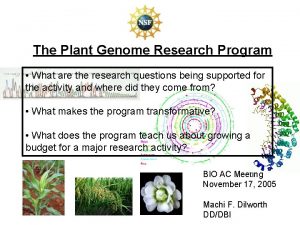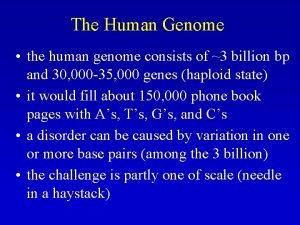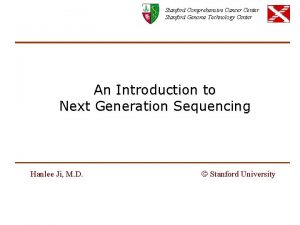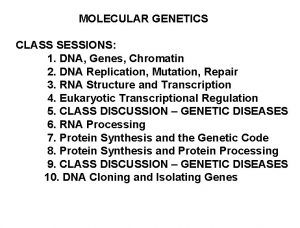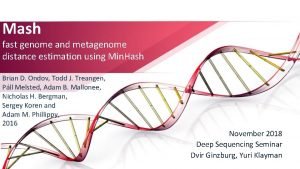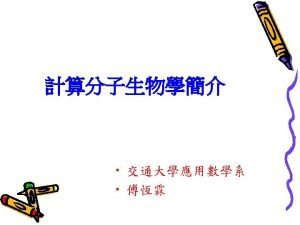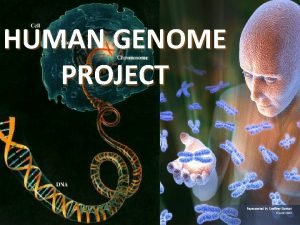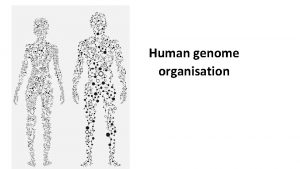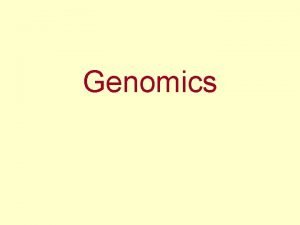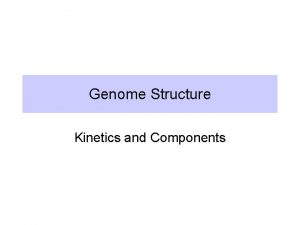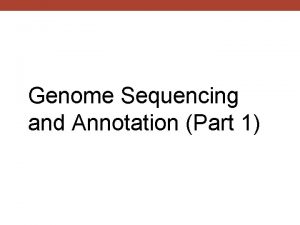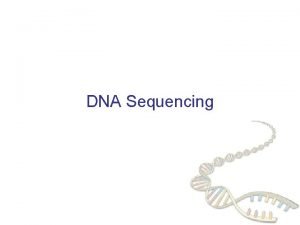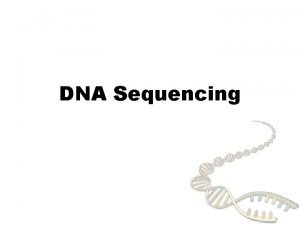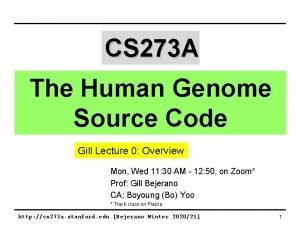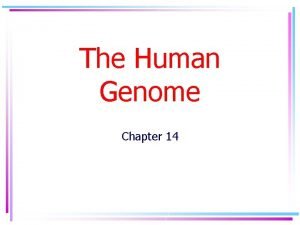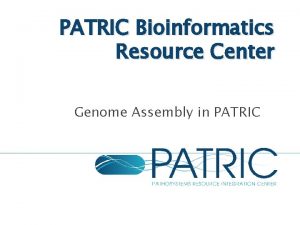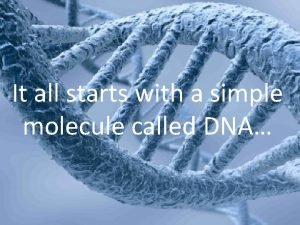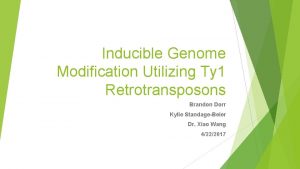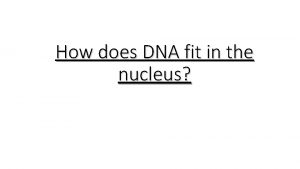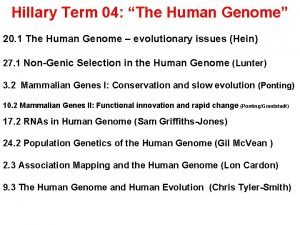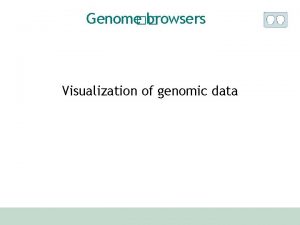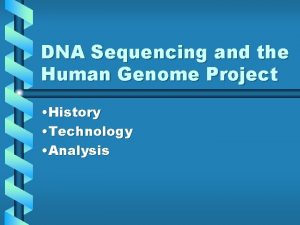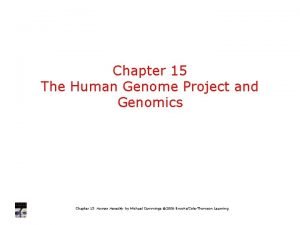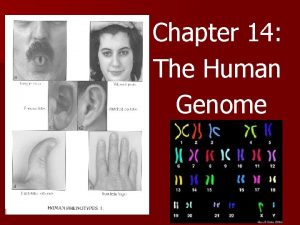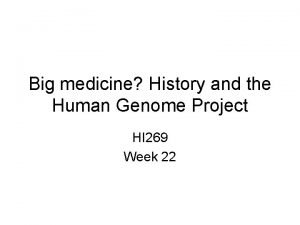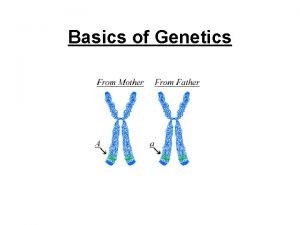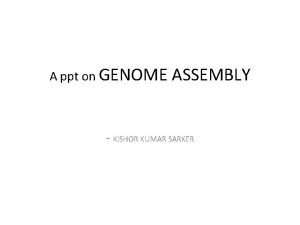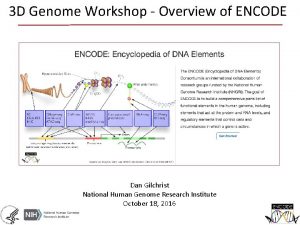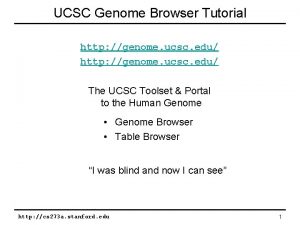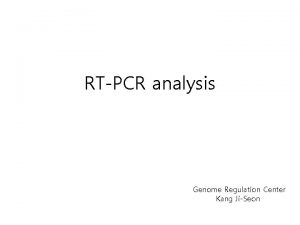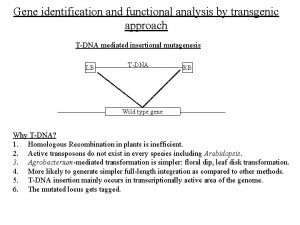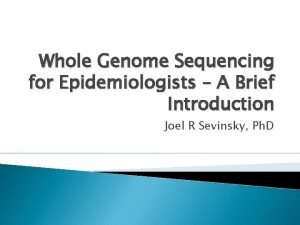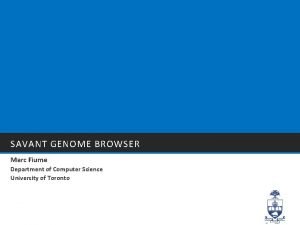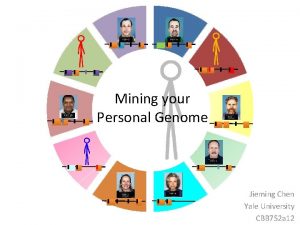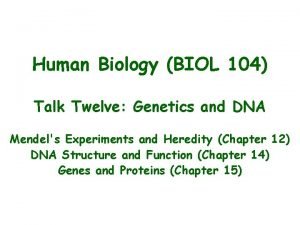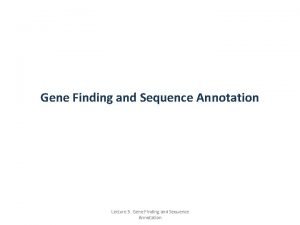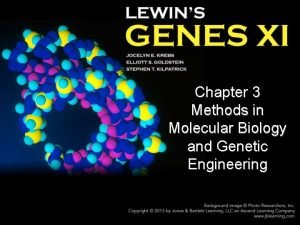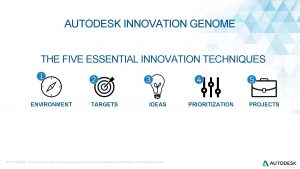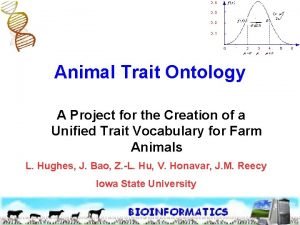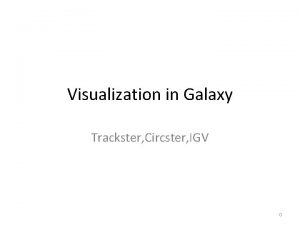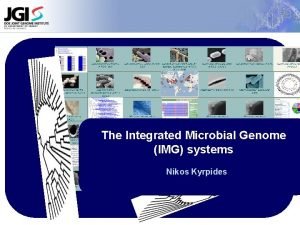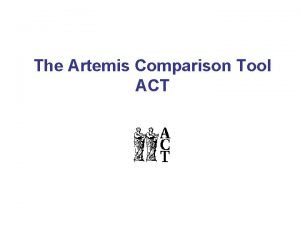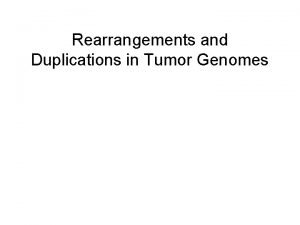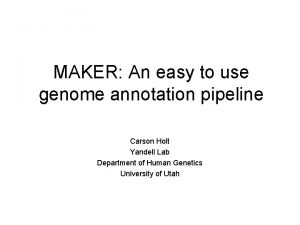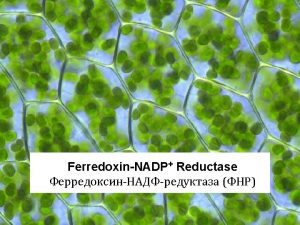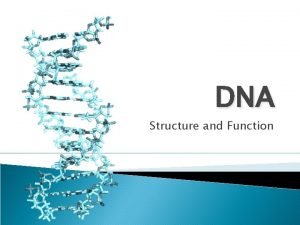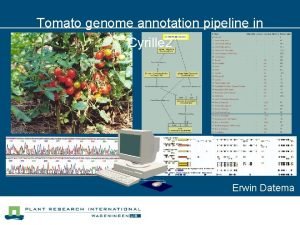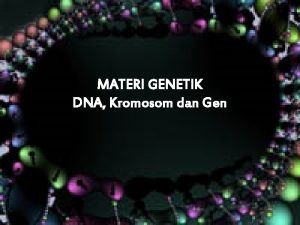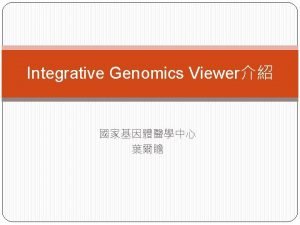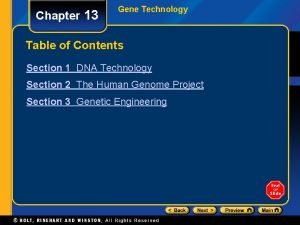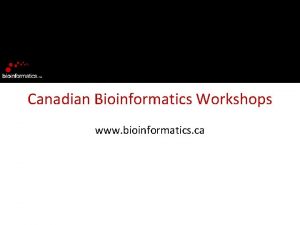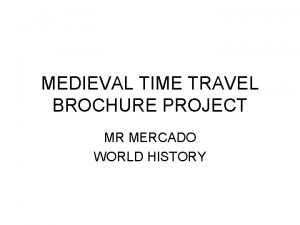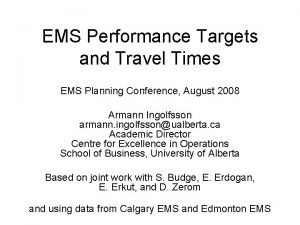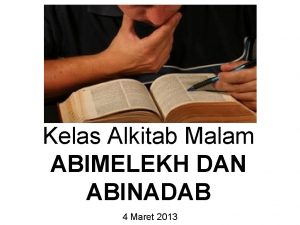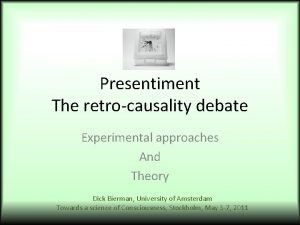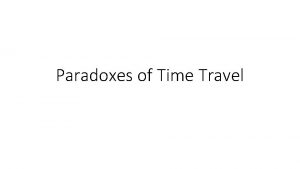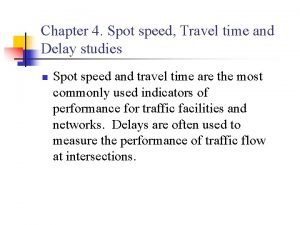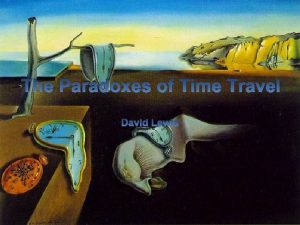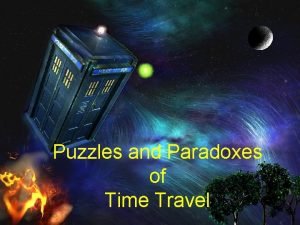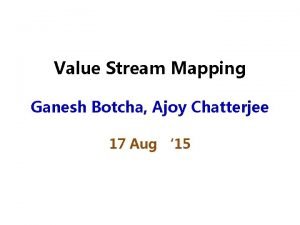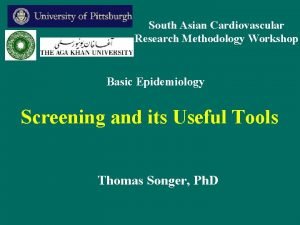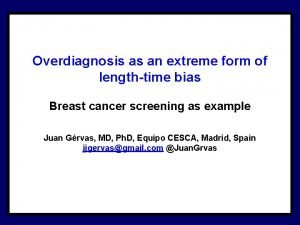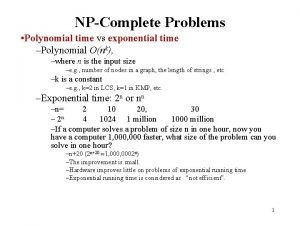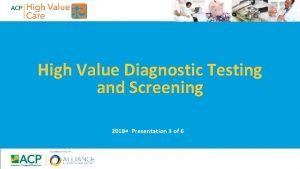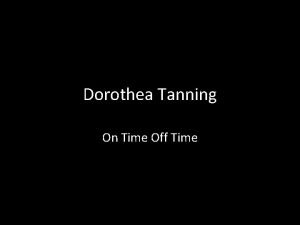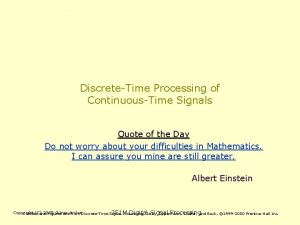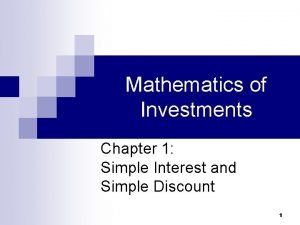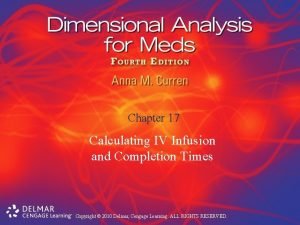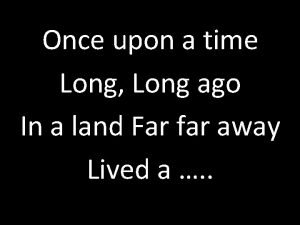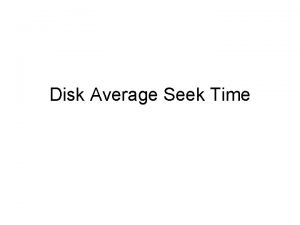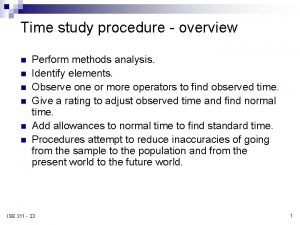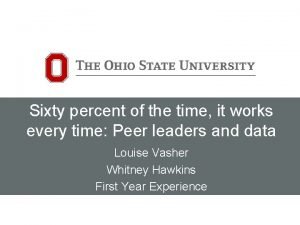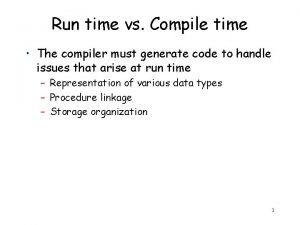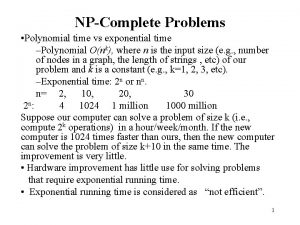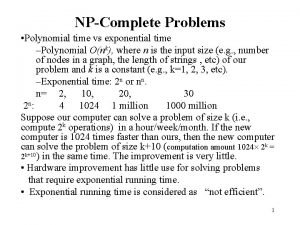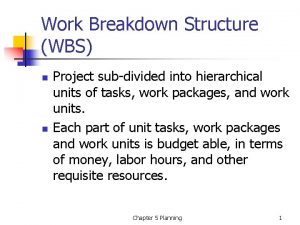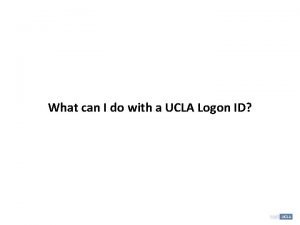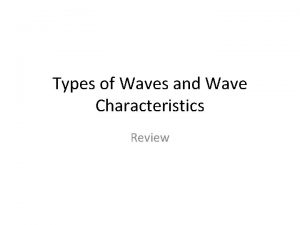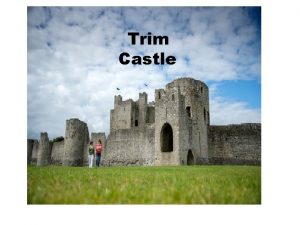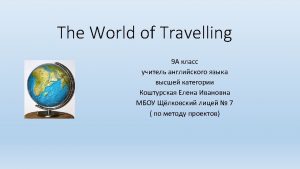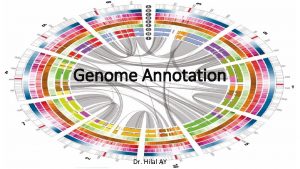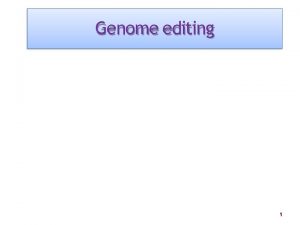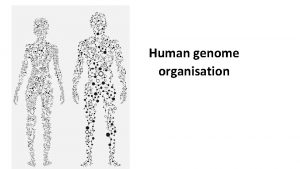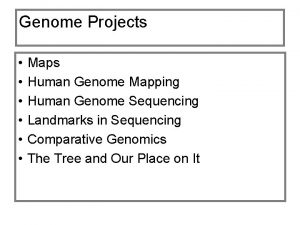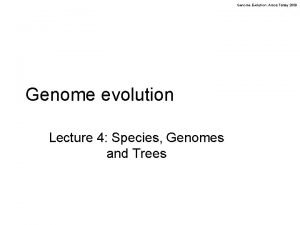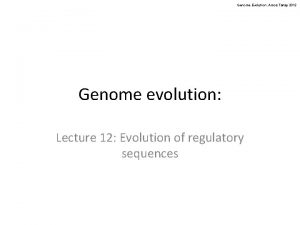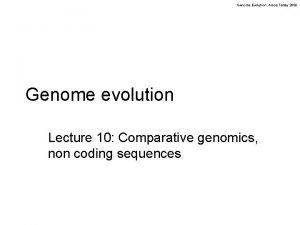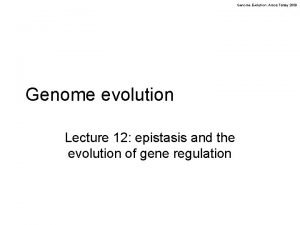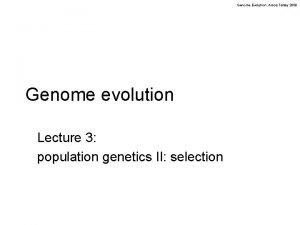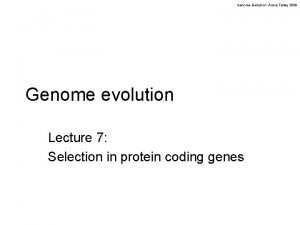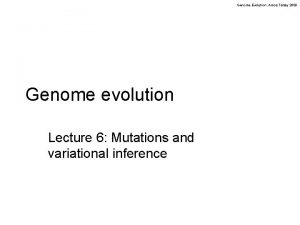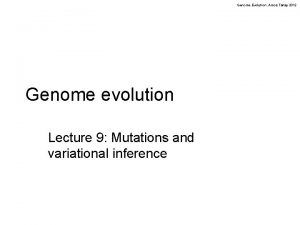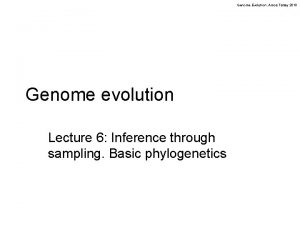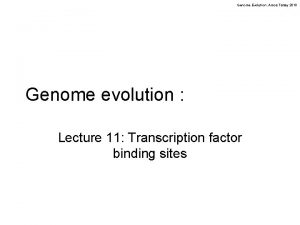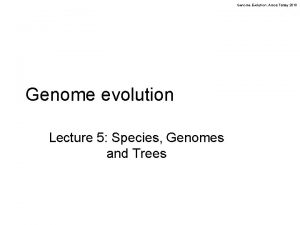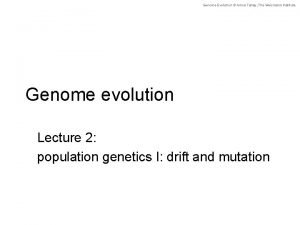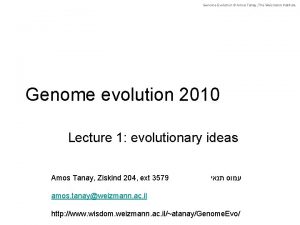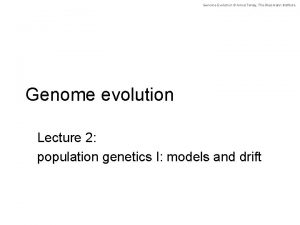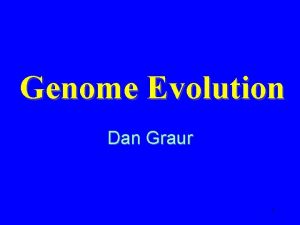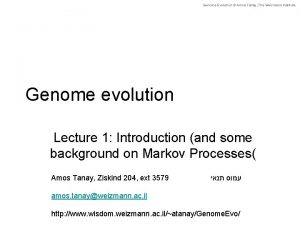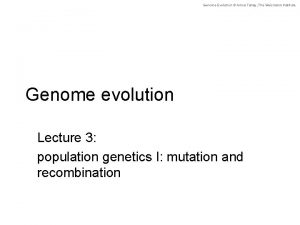Evolution Time Travel Genome Evolution Evolution Time Travel






















![Definitions • [F. Farnoud, M. Schwartz, J. Bruck, ISIT’ 14] Definitions • [F. Farnoud, M. Schwartz, J. Bruck, ISIT’ 14]](https://slidetodoc.com/presentation_image/58d83e78872b1bbec5e06eba9c948257/image-23.jpg)










![[S. Jain, F. Farnoud, J. Bruck, IEEE IT 2017] [S. Jain, F. Farnoud, J. Bruck, IEEE IT 2017]](https://slidetodoc.com/presentation_image/58d83e78872b1bbec5e06eba9c948257/image-34.jpg)
![Arbitrary Seed [S. Jain, F. Farnoud, J. Bruck, IEEE IT 2017] Arbitrary Seed [S. Jain, F. Farnoud, J. Bruck, IEEE IT 2017]](https://slidetodoc.com/presentation_image/58d83e78872b1bbec5e06eba9c948257/image-35.jpg)
![Arbitrary Seed [S. Jain, F. Farnoud, J. Bruck, IEEE IT 2017] Arbitrary Seed [S. Jain, F. Farnoud, J. Bruck, IEEE IT 2017]](https://slidetodoc.com/presentation_image/58d83e78872b1bbec5e06eba9c948257/image-36.jpg)























































![[S. Jain, B. Mazaheri, N. Raviv, J. Bruck, bio. Rxiv 517839] [S. Jain, B. Mazaheri, N. Raviv, J. Bruck, bio. Rxiv 517839]](https://slidetodoc.com/presentation_image/58d83e78872b1bbec5e06eba9c948257/image-92.jpg)
![[S. Jain, B. Mazaheri, N. Raviv, J. Bruck, bio. Rxiv 517839] [S. Jain, B. Mazaheri, N. Raviv, J. Bruck, bio. Rxiv 517839]](https://slidetodoc.com/presentation_image/58d83e78872b1bbec5e06eba9c948257/image-93.jpg)
![Class_1 = [brain] Class_2 = [skin] Class_3 = [pancreas] Class_4 = [rest] [S. Jain, Class_1 = [brain] Class_2 = [skin] Class_3 = [pancreas] Class_4 = [rest] [S. Jain,](https://slidetodoc.com/presentation_image/58d83e78872b1bbec5e06eba9c948257/image-94.jpg)
![Class_1 = [brain] Class_2 = [skin] Class_3 = [pancreas] Healthy Genome Multiclassifier [S. Jain, Class_1 = [brain] Class_2 = [skin] Class_3 = [pancreas] Healthy Genome Multiclassifier [S. Jain,](https://slidetodoc.com/presentation_image/58d83e78872b1bbec5e06eba9c948257/image-95.jpg)
![Class_1 = [brain] Class_2 = [skin] Class_3 = [pancreas] Healthy Genome Multiclassifier [S. Jain, Class_1 = [brain] Class_2 = [skin] Class_3 = [pancreas] Healthy Genome Multiclassifier [S. Jain,](https://slidetodoc.com/presentation_image/58d83e78872b1bbec5e06eba9c948257/image-96.jpg)
![Class_1 = [brain] Class_2 = [skin] Class_3 = [pancreas] Healthy Genome Multiclassifier [S. Jain, Class_1 = [brain] Class_2 = [skin] Class_3 = [pancreas] Healthy Genome Multiclassifier [S. Jain,](https://slidetodoc.com/presentation_image/58d83e78872b1bbec5e06eba9c948257/image-97.jpg)







- Slides: 104


Evolution Time Travel

Genome Evolution ? Evolution Time Travel Me

Decoding the Past Lecture 17

Reference Genome

Reference Genome Healthy Sick Healthy Compare variants/Comparative Genomics. Statistics, Signal Processing/Data Science/Machine Learning/Big Data, etc.

Claude Shannon Victim of Information Theory Effect Evolution Channel Snapshot Evolution Channel First Order! No history information

Evolution Channel Hereditary Environmental Controlling Factors Stochastic For physical traits like race, the history information may not be relevant in a single lifetime. For mutation based diseases like cancer – the history information is critical even in a single lifetime!

Can we use a single genome to gather information about the evolution channel?

Mutational Events Duplication Mutations Insertion/Deletion Substitution

Mutational Events Duplication Mutations Insertion/Deletion Substitution ACGT ACAT

Mutational Events Duplication Mutations Insertion ACGT ACTGT Substitution ACGT ACAT

Mutational Events Duplication Mutations Deletion ACGT AGT Substitution ACGT ACAT

Mutational Events Duplication Tandem: ACTGT ACTCTGT Mutations Insertion/Deletion ACGT ACTGT ACGT AGT Substitution ACGT ACAT

Mutational Events Duplication Tandem: ACTGT ACTCTGT Interspersed: ACTGT ACTGCTT Mutations Insertion/Deletion ACGT ACTGT ACGT AGT Substitution ACGT ACAT

Evolution Model AGATACTATTAGGGCCCCATACGTTGACTA Some sequence s n it o a t u ACGTC Seed M

Evolution Model AGATACTATTAGGGCCCCATACGTTGACTA There is always a path Some sequence l e ACGTC Seed u S I , b s n D , Unconstrained

Evolution Model AGATACTATTAGGGCCCCATACGTTGACTA Some sequence a c ACGTC Seed it o u D i l p s n Constrained

Evolution Model AGATACTATTAGGGCCCCATACGTTGACTA Some sequence s n o ti a c i ACGTC Seed l p u m e d n Ta D Constrained

Tandem Duplication Example Seed = AC ACACCACACACCACACACACCACACACCACACCAACCACACCACAC Tandem Repeat

Example • z s

Example • : z : s :
![Definitions F Farnoud M Schwartz J Bruck ISIT 14 Definitions • [F. Farnoud, M. Schwartz, J. Bruck, ISIT’ 14]](https://slidetodoc.com/presentation_image/58d83e78872b1bbec5e06eba9c948257/image-23.jpg)
Definitions • [F. Farnoud, M. Schwartz, J. Bruck, ISIT’ 14]

Example • z s

Examples 01012 01212 0101012 . . 0101212 . . 0121212 0101212 0012 0112 0122 . . . . 01012 . . . 01212 . .

Diversity S. Jain, F. Farnoud, J. Bruck, ‘’Capacity and Expressiveness of Genomic Tandem Duplication” IEEE IT 2017 Tandem Duplications seed

Capacity • z What it means? s [F. Farnoud, M. Schwartz, J. Bruck, ISIT’ 14]

Example • s z

Capacity • z Proof Idea Finite Automata [S. Jain, F. Farnoud, J. Bruck, IEEE IT’ 17]

Finite Automata Example Sequence of parties of last 10 different American Presidents Useful way to model transitions between states in a sequence

Strongly connected component Perron-Frobenius Theory [S. Jain, F. Farnoud, J. Bruck, IEEE IT 2017]

Capacity • z Proof Idea Finite Automata [S. Jain, F. Farnoud, J. Bruck, IEEE IT’ 17]

Capacity • z Proof Idea Finite Automata [S. Jain, F. Farnoud, J. Bruck, IEEE IT’ 17]
![S Jain F Farnoud J Bruck IEEE IT 2017 [S. Jain, F. Farnoud, J. Bruck, IEEE IT 2017]](https://slidetodoc.com/presentation_image/58d83e78872b1bbec5e06eba9c948257/image-34.jpg)
[S. Jain, F. Farnoud, J. Bruck, IEEE IT 2017]
![Arbitrary Seed S Jain F Farnoud J Bruck IEEE IT 2017 Arbitrary Seed [S. Jain, F. Farnoud, J. Bruck, IEEE IT 2017]](https://slidetodoc.com/presentation_image/58d83e78872b1bbec5e06eba9c948257/image-35.jpg)
Arbitrary Seed [S. Jain, F. Farnoud, J. Bruck, IEEE IT 2017]
![Arbitrary Seed S Jain F Farnoud J Bruck IEEE IT 2017 Arbitrary Seed [S. Jain, F. Farnoud, J. Bruck, IEEE IT 2017]](https://slidetodoc.com/presentation_image/58d83e78872b1bbec5e06eba9c948257/image-36.jpg)
Arbitrary Seed [S. Jain, F. Farnoud, J. Bruck, IEEE IT 2017]

Expressiveness Seed

Expressiveness Seed

Example • s z

Example • s z

Example • s z

Example • z s

Expressiveness Expressive arbitrary Yes Binary arbitrary No Binary 01 Yes Ternary arbitrary No Ternary Yes arbitrary z No Proof uses Thue’s repeatfree result. [S. Jain, F. Farnoud, J. Bruck, IEEE IT 2017]

Example • Generation is slow s z

Example z faster? Does allowing all duplication lengths make generation s

Duplication Distance N. Alon, J. Bruck, F. Farnoud, S. Jain, “Duplication Distance to the root for binary sequence” IEEE IT 2017 Shortest Path Length? seed Take away: Short duplication lengths play the main role in generating diversity!

Seed = 01 0101101 Sequence = 01011001

Seed = 01 Think Reverse! 0101101 Sequence = 01011001

• 01201212

• 01201212

• 01201212 s = 012

• 01201212 s = 012012

• 01201212 s = 012012 s’ = 012

• 01212

• 01212

• 01212 s = 012

• 01212 s = 012 s’ = 0121012

Uniqueness of ancestor S. Jain, F. Farnoud, M. Schwartz, J. Bruck ‘’Duplication correcting codes for data storage in the DNA of a living organism’’ IEEE IT 2017 s s’ Does the order in which repeats are removed matter?

Tk, T≤ 2, T≤ 3 It doesn’t matter! [S. Jain, F. Farnoud, M. Schwartz, J. Bruck, IEEE IT’ 17]

Channel Model Input sequence AGGGTCCA Tandem Duplication Errors Output Sequence AGGGGTTCTCCACCA

Live DNA storage Information stored in DNA Shipman et al. , Nature 2017 stored a gif in bacterial DNA. Time Parent Mutations Information Corrupted ! Parent or Child [S. Jain, F. Farnoud, M. Schwartz, J. Bruck, IEEE IT’ 17]

Live DNA storage Information stored in DNA Tandem Duplications Shipman et al. , Nature 2017 stored a gif in bacterial DNA. Time Parent Information Corrupted ! Parent or Child Error Correcting Code [S. Jain, F. Farnoud, M. Schwartz, J. Bruck, IEEE IT’ 17]

Summary Until Now AGATACTATTAGGGCCCCATACGTTGACTA Some sequence s n tio a c li ACGTC Seed n a T m e d p u D

Diversity Measures Expressiveness Seed Capacity Seed

Shortest Path Length ? Some sequence Seed Duplication Distance

Unique or Non-Unique Irreducible Seed ? Seed 3 Some sequence Seed 2 ti a ic l up s n o D Seed 1 Seed Ta m e nd Bonnet et al. , 2012 Shipman et al. , Nature 2017 stored a gif in bacterial DNA.

AGATACTATTAGGGCCCCATACGTTGACTA Some sequence ACGTC Seed s n io t a s c i on l p ti u D titu m bs e d u n S a T +

Moving to real DNA data

Observations Tandem Others 3% 3% Interspersed 45% Unique 49% [Human Genome Project, Nature, 2001]

Observations Tandem Others 3% 3% Areas of high mutation rates Interspersed 45% Unique 49% [Human Genome Project, Nature, 2001]

Human Chr. 1 136200 — 137288 TGAGGCAGGGGGTCACGCTGACCTCTGTCCGCGTGGGAGGGGCCGGTGTGAGGCA AGGGCTCACACTGACCTCTCTCAGCGTGGGAGGGGCCGGTGTGAGGCAAGGGGCT CACGCTGACCTCTGTCCGCGTGGGAGGGGCCGGTGTGAGGCAAGGGCTCACACTG ACCTCTCTCAGCGTGGGAGGGGCCGGTGTGAGGCAAGGGGCTCACGCTGACCTCTG TCCGCGTGGGAGGGGCTGGTGTGAGGCAAGGGCTCAGGCTGACCTCTCTCAGCGTG GGAGGGGCCGGTGTGAGGCAAGGGGCTCACGCTGACCTCTGTCCGCGTGGGAGGG GCCGGTGTGAGACAAGGGGCTCACACTGACCTCTCTCAGCGTGGGAGGGGCCGGT GTGAGGCAAGGGGCTCAGGCTGACCTCTGTCCGCGTGGGAGGGGCCGGTGTGAGGCAAGGG GCTCAGGCTGACCTCTGTCCGCGTGGGAGGGGCCGGGGTGAGGCAAGGGCTCACA CTGACCTCTCTCAGCGTGGGAGGGGCCGGTGTGAGGCAAGGGGCTCGGGCTGACCTCTCTCAG CGTGGGAGGGGCCGGTGTGAGGCAAGGGGCTCGGGCTGACCTCTGTCCGCGTGGG AGGGGCCGGTGTGAGGCAAGGGGCTCGGGCTGACCTCTCTCAGCGTGGGAGGGGC CGGTGTGAGGCAAGGGGCTCACGCTGACCTCTGTCCGCGTGGGAGGGGCCGGTGT GAGGCAAGGGCTCACACTGACCTCTCTCAGCGTGGGAGGGGCCGGTGTGAGACAA GGGGCTCACGCTGACCTCTGTCCACGTGGGAGGGGCCGGTGTGAGGCAAGGGGCT CACACTGACCTCTCTCAGCGTGGGAGGGGCCGGTGTGAGGCAAGGGGCTCACGCT GACCTCTGTCCGCGTGGGAGGGGCCGGTGTGAGGCAAGGGCTCACACTGACCTCTC TCAGCGTGGGAGGAGCCAGTGTGAGGCAGGGGCTCACGC

TGAGGCAGGGG GTCACGCTGACCTCTGTCCGCGTGGGAGGGGCCGGTG TGAGGCAAGGG CTCACACTGACCTCTCTCAGCGTGGGAGGGGCCGGTG TGAGGCAAGGGGCTCACGCTGACCTCTGTCCGCGTGGGAGGGGCCGGTG TGAGGCAAGGG CTCACACTGACCTCTCTCAGCGTGGGAGGGGCCGGTG TGAGGCAAGGGGCTCACGCTGACCTCTGTCCGCGTGGGAGGGGCTGGTG TGAGGCAAGGG CTCAGGCTGACCTCTCTCAGCGTGGGAGGGGCCGGTG TGAGGCAAGGGGCTCACGCTGACCTCTGTCCGCGTGGGAGGGGCCGGTG TGAGACAAGGGGCTCACACTGACCTCTCTCAGCGTGGGAGGGGCCGGTG TGAGGCAAGGGGCTCAGGCTGACCTCTGTCCGCGTGGGAGGGGCCGGTG TGAGGCAAGGGGCTCAGGCTGACCTCTGTCCGCGTGGGAGGGGCCGGGG TGAGGCAAGGG CTCACACTGACCTCTCTCAGCGTGGGAGGGGCCGGTG TGAGGCAAGGGGCTCGGGCTGACCTCTCTCAGCGTGGGAGGGGCCGGTG TGAGGCAAGGGGCTCGGGCTGACCTCTGTCCGCGTGGGAGGGGCCGGTG TGAGGCAAGGGGCTCGGGCTGACCTCTCTCAGCGTGGGAGGGGCCGGTG TGAGGCAAGGGGCTCACGCTGACCTCTGTCCGCGTGGGAGGGGCCGGTG TGAGGCAAGGG CTCACACTGACCTCTCTCAGCGTGGGAGGGGCCGGTG TGAGACAAGGGGCTCACGCTGACCTCTGTCCACGTGGGAGGGGCCGGTG TGAGGCAAGGGGCTCACACTGACCTCTCTCAGCGTGGGAGGGGCCGGTG TGAGGCAAGGGGCTCACGCTGACCTCTGTCCGCGTGGGAGGGGCCGGTG TGAGGCAAGGG CTCACACTGACCTCTCTCAGCGTGGGAGGAGCCAGTG TGAGGCAGGGG CTCACGC

Slipped Strand Mispairing Mc. Intosh et al. , 2017

History 1 History 2 History 1 is more likely!

History 1 History 2 Information about accumulation of mutations!

Signature of how genome is mutating Second Order! [S. Jain, B. Mazaheri, N. Raviv, J. Bruck, bio. Rxiv 517839]

Second Order First Order X Genome with variants Mutation Profiles Genome Wide Association Studies and Linkage studies No history information Hirschhorn et al. , 2005 Lander et al. , 2011 History information

Cancer Genomics Campbell et al. , Nature 2010

Cancer Genomics Campbell et al. , Nature 2010

Cancer Genomics Tumor DNA Tumor Cell Compare Normal DNA Healthy Cell Discover Variants or SNPs or CNVs that serve as risk factors [Sud et al, Nature Reviews, 2017]

Cancer Genomics Campbell et al. , Nature 2010 These mutational events are the ``effects’’ of the underlying evolution channel

Hypothesis Intrinsic mutation rate associated with the propensity to accumulate driver (bad) mutations that lead to certain kind of cancer. May be the mutation profiles of normal (healthy) DNA contain some signal about this accumulation. If true, we can use mutation profiles of normal DNA to predict future cancer risk To verify the hypothesis: Need DNA of people before they got cancer. Availing such data is currently not possible.

Approximation Will use blood-derived “healthy” DNA of cancer patients to check if the mutation profiles show any association with the cancer-type.

Source of Data

Use only blood derived healthy DNA to detect a cancer-type signal Healthy DNA Samples Repeat Finder (Benson et al. , 1999) Tandem Repeats History Estimation (Tang et al. , 2002) Features Mutation Profiles Learning Algorithm Classifier [S. Jain, B. Mazaheri, N. Raviv, J. Bruck, Bio. Rxiv 517839]

• Each DNA sample file: 15 -25 GB • Number of samples: > 5000 Data! • Total data ~ 75 TB – 125 TB • Data security protocol: can only use a secure cluster • Become an ENGINEER! • Use a cluster. To learn! • Figure out the TCGA database. • Automate downloading of data. • Shell, python and C++ scripting • Learn Bioinformatics tools • Store processed data • Do some data science!

Use only blood derived healthy DNA to detect a cancer-type signal Healthy DNA Samples Repeat Finder (Benson et al. , 1999) Tandem Repeats History Estimation (Tang et al. , 2002) Features Mutation Profiles Learning Algorithm Classifier [S. Jain, B. Mazaheri, N. Raviv, J. Bruck, Bio. Rxiv 517839]

75% training set 4 -fold cross-validation 25% test set

58% average validation accuracy prostate 0. 58 prostate lung bladder prostate 0. 63 BOOM 0. 66 prostate stomach 0. 82 BOOM prostate brain [S. Jain, B. Mazaheri, N. Raviv, J. Bruck, bio. Rxiv 517839] 0. 76 skin

Question for the audience What machine learning algorithm worked best for us to obtain the results shown ? (a) Neural Networks (b) SVM (c) Decision Tree – Gradient Boosting

Question for the audience What machine learning algorithm worked best for us to obtain the results shown ? Decision Tree – Gradient Boosting Brieman et al. , 1984 Mason et al. , 1999
![S Jain B Mazaheri N Raviv J Bruck bio Rxiv 517839 [S. Jain, B. Mazaheri, N. Raviv, J. Bruck, bio. Rxiv 517839]](https://slidetodoc.com/presentation_image/58d83e78872b1bbec5e06eba9c948257/image-92.jpg)
[S. Jain, B. Mazaheri, N. Raviv, J. Bruck, bio. Rxiv 517839]
![S Jain B Mazaheri N Raviv J Bruck bio Rxiv 517839 [S. Jain, B. Mazaheri, N. Raviv, J. Bruck, bio. Rxiv 517839]](https://slidetodoc.com/presentation_image/58d83e78872b1bbec5e06eba9c948257/image-93.jpg)
[S. Jain, B. Mazaheri, N. Raviv, J. Bruck, bio. Rxiv 517839]
![Class1 brain Class2 skin Class3 pancreas Class4 rest S Jain Class_1 = [brain] Class_2 = [skin] Class_3 = [pancreas] Class_4 = [rest] [S. Jain,](https://slidetodoc.com/presentation_image/58d83e78872b1bbec5e06eba9c948257/image-94.jpg)
Class_1 = [brain] Class_2 = [skin] Class_3 = [pancreas] Class_4 = [rest] [S. Jain, B. Mazaheri, N. Raviv, J. Bruck, bio. Rxiv 517839]
![Class1 brain Class2 skin Class3 pancreas Healthy Genome Multiclassifier S Jain Class_1 = [brain] Class_2 = [skin] Class_3 = [pancreas] Healthy Genome Multiclassifier [S. Jain,](https://slidetodoc.com/presentation_image/58d83e78872b1bbec5e06eba9c948257/image-95.jpg)
Class_1 = [brain] Class_2 = [skin] Class_3 = [pancreas] Healthy Genome Multiclassifier [S. Jain, B. Mazaheri, N. Raviv, J. Bruck, bio. Rxiv 517839]
![Class1 brain Class2 skin Class3 pancreas Healthy Genome Multiclassifier S Jain Class_1 = [brain] Class_2 = [skin] Class_3 = [pancreas] Healthy Genome Multiclassifier [S. Jain,](https://slidetodoc.com/presentation_image/58d83e78872b1bbec5e06eba9c948257/image-96.jpg)
Class_1 = [brain] Class_2 = [skin] Class_3 = [pancreas] Healthy Genome Multiclassifier [S. Jain, B. Mazaheri, N. Raviv, J. Bruck, bio. Rxiv 517839]
![Class1 brain Class2 skin Class3 pancreas Healthy Genome Multiclassifier S Jain Class_1 = [brain] Class_2 = [skin] Class_3 = [pancreas] Healthy Genome Multiclassifier [S. Jain,](https://slidetodoc.com/presentation_image/58d83e78872b1bbec5e06eba9c948257/image-97.jpg)
Class_1 = [brain] Class_2 = [skin] Class_3 = [pancreas] Healthy Genome Multiclassifier [S. Jain, B. Mazaheri, N. Raviv, J. Bruck, bio. Rxiv 517839]

Summary • New microscope to view the genome. • Decodes the evolutionary memory of tandem repeat regions to measure the accumulation of mutations. • Detected the cancer-type signal from the healthy genome. • Implicitly inferring about a process of acquiring mutations in the blood that is associated with cancer in a tissue-specific way. • Has potential applications in predicting future cancer risk and early cancer detection. https: //www. biorxiv. org/content/10. 1101/517839 v 1

Mutation Rate MASK Location on DNA What we see

Mutation Rate Tandem Repeat Regions (Vulnerable Spots) Location on DNA What we see

Thank you Announcements!

Programming Challenge Thursday, 05/30, 2. 30 pm – PCP 1. Joseph Min 2. Ajay Natarajan & Ananth Malladi & Shubh Agarwal 3. Monika Getsova 4. Justin Zhang & Sebastien Abadi 5. Kade Imanaka & Selina Zhou

Everyone has a Gift! Tuesday, 06/04, 2. 30 pm – MQ 1 1. Toussaint Pegues 2. Paromita Mitchell 3. Maya Joysula 4. Thomas Barrett 5. Polina Verkhovodova 6. Jeffrey Ma 7. Kade Immanka

2000 2020 2040 Thursday, 06/06, 2. 30 pm – MQ 2 1. Tatiana Brailovskaya 2. Isabella Camplisson & Chan Gi Kim 3. Colin Chun 4. Michelle M Hyun & Isaac John Perrin 5. Madison Lee 6. Vincent Tieu 7. Nora Griffith 8. Ananth Malladi & Forrest Graham
 Semi-global alignment
Semi-global alignment What is genome
What is genome Plant genome research program
Plant genome research program Euphenics
Euphenics Stanford
Stanford Human genome size
Human genome size Mash bioinformatics
Mash bioinformatics Human genome size
Human genome size Human genome features
Human genome features Satellite dna
Satellite dna Hierarchical shotgun sequencing vs whole genome
Hierarchical shotgun sequencing vs whole genome Repeated sequences
Repeated sequences Hierarchical shotgun sequencing vs whole genome
Hierarchical shotgun sequencing vs whole genome Shotgun sequencing
Shotgun sequencing Genome sequencing
Genome sequencing Human genome project source code
Human genome project source code Chapter 14 the human genome making karyotypes answer key
Chapter 14 the human genome making karyotypes answer key Patric genome
Patric genome National human genome research institute
National human genome research institute Genome modification ustaz auni
Genome modification ustaz auni National human genome research institute
National human genome research institute Human genome project
Human genome project Genome klick
Genome klick History of sequencing
History of sequencing Chapter 15
Chapter 15 Chapter 14 the human genome
Chapter 14 the human genome Human genome project
Human genome project National human genome research institute
National human genome research institute Sequence assembly ppt
Sequence assembly ppt Encode
Encode Genome.ucsc.edu tutorial
Genome.ucsc.edu tutorial Genome
Genome Tirmarker
Tirmarker Genome sequencing
Genome sequencing Savant genome browser
Savant genome browser Genome.gov
Genome.gov Ribosomes structures
Ribosomes structures Alternate splicing
Alternate splicing Gene annotation
Gene annotation Genome.gov
Genome.gov Genome research limited
Genome research limited Innovation genome project
Innovation genome project Genome mapping
Genome mapping Igv genome browser
Igv genome browser Integrated microbial genome
Integrated microbial genome Chrl3
Chrl3 Genome project
Genome project Scalable annotation pipeline
Scalable annotation pipeline Biologists search the volumes of the human genome using
Biologists search the volumes of the human genome using Genome definition
Genome definition What is a human genome
What is a human genome Tomato genome browser
Tomato genome browser Genome adalah
Genome adalah Igv broad institute
Igv broad institute Chapter 13 section 3 the human genome
Chapter 13 section 3 the human genome Savant genome browser
Savant genome browser What is elapsed time
What is elapsed time Creating a time travel brochure
Creating a time travel brochure Travel time curve
Travel time curve Determining the arrival times between p-wave and s-wave
Determining the arrival times between p-wave and s-wave Abimelech time travel in the bible
Abimelech time travel in the bible Retrocausality time travel
Retrocausality time travel David lewis the paradoxes of time travel
David lewis the paradoxes of time travel Travel time and delay studies
Travel time and delay studies The paradoxes of time travel david lewis
The paradoxes of time travel david lewis Time travel paradox
Time travel paradox Takt time vs cycle time
Takt time vs cycle time Length bias vs lead time bias
Length bias vs lead time bias Length bias vs lead time bias
Length bias vs lead time bias Exponential vs polynomial
Exponential vs polynomial How to write military time
How to write military time Think time
Think time Lead time bias vs length time bias
Lead time bias vs length time bias Setup time and hold time in digital electronics
Setup time and hold time in digital electronics Dorothea tanning on time off time
Dorothea tanning on time off time Discrete time processing of continuous time signals
Discrete time processing of continuous time signals 12:00 pm
12:00 pm P=i/rt
P=i/rt Comparing distance/time graphs to speed/time graphs
Comparing distance/time graphs to speed/time graphs Calculating iv infusion rate
Calculating iv infusion rate Once upon a time long ago
Once upon a time long ago Seek time in magnetic disk
Seek time in magnetic disk Work study
Work study Time study procedure
Time study procedure Sixty percent of the time it works every time
Sixty percent of the time it works every time Build time vs compile time
Build time vs compile time Once upon a long time ago
Once upon a long time ago Time in instead of time out
Time in instead of time out Exponential vs polynomial time
Exponential vs polynomial time Polynomial time vs exponential time
Polynomial time vs exponential time Breakdown
Breakdown My ucla gradebook
My ucla gradebook Mig welding voltage chart
Mig welding voltage chart Michigan business travel association
Michigan business travel association Longitudinal wave vs transverse wave
Longitudinal wave vs transverse wave Three waves a b and c travel 12 meters in 2.0 seconds
Three waves a b and c travel 12 meters in 2.0 seconds China travel brochure
China travel brochure Usf study abroad office
Usf study abroad office Coast guard sato travel
Coast guard sato travel Concur uaf
Concur uaf Sound waves from a radio generally travel in which medium
Sound waves from a radio generally travel in which medium Dempsey travel trim
Dempsey travel trim View travelport
View travelport Trip journey travel difference
Trip journey travel difference Repeat past tense
Repeat past tense
